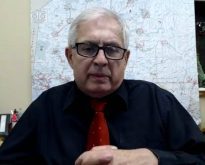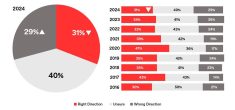“What would be the point of farming if you had debt all your life?”
– DAN MAZIER
Farmers from different age groups tend to have different perspectives on life and the business of growing food.
At the Farm Management Conference held last week on the sidelines of the Wheat City Stampede, participants heard from four farmers representing all stages of life: from beginning farmers, to established operators, and those about to retire.
Owen McAuley, who farms 6,000 acres and runs a couple hundred head of commercial cattle, has been heavily involved in farm issues as a member of Keystone Agricultural Producers and in working with government in the development of public policy.
Read Also

Mazergroup’s Bob Mazer dies
Mazergroup’s Bob Mazer, who helped grow his family’s company into a string of farm equipment dealerships and the main dealer for New Holland machinery in Saskatchewan and Manitoba, died July 6 from cancer.
The McAuley-area farmer, who has been planning to retire and let the next generation take over the farm, has been involved in the succession-planning process since the late 1990s with his son, daughter and son-in-law.
GENERATIONAL INFIGHTING
He worked with the provincial debt review board for 11 years and saw “tons” of operations fail due to infighting, because the family transfer was done too hastily, or with a lack of attention to detail.
“I started farming when I was 20 years old,” he said. “My risk strategy was ‘borrow every nickel I could.’ That’s what they taught in university. Leverage every dollar to the maximum – inflation will look after you.”
That was back in the late 1960s, however. Since then, he has become much more risk averse. He noted that as Canadian farms have grown in size, they have also accumulated an estimated $60 billion in debt.
To service that debt, the average farm income in the past three years, not counting 2008, was net $125 million.
“A one per cent increase in interest rates is $600 million against agriculture’s debt. How do you service that with $125 million in net farm income?” he asked.
“If you want to survive, you’d better be at the top of your pack and have business savvy.”
DEBT LOADS
Dan Mazier, who farms with his brother near Forrest with his wife Leigh and two teenage children, gave up a lucrative job at a local fertilizer plant to become a full-time farmer in 2001. He recently asked his daughter whether she would like to someday take over the farm.
She replied, “What would be the point of farming if you had debt all your life?”
His son, who is currently looking at an occupation in the trades, figured that the cattle business might be more his style.
“‘There seems to be good money in cattle,’ he said. ‘That grain stuff – harvest – it’s way too intense, Dad. That’s crazy,’”
said Mazier, with a laugh.
He noted that his studies of farm income charts going back to the 1970s seem to indicate that the current model is broken, with incomes trending ever deeper into negative territory.
“There has got to be a way of changing things so that our kids will be looking into a positive future,” he said.
Mazier, an energetic proponent of community-based alternative energy strategies, believes that the high cost of fossil fuel – roughly $2,200 per person, per year – is draining the economic lifeblood of rural communities.
NEW ATTITUDES NEEDED
That, and an agricultural industry that is framed around export markets no matter what the cost to the farmer, is to blame for farming’s bleak outlook.
“I really thought I was going to farm differently: organic, holistic, farmers’ markets, marketing with options, whatever,” he said. “I wanted to do things better. But the system has a tendency to prop up the old ways of doing things.”
Rod and Kristi Guilford, who farm 2,500 acres and run 800 head of cattle near Clearwater, are still going through the succession process with Rod’s parents, who are in their early 60s. They described it as a “work in progress.”
“You’re dealing with individuals who quite often have very different ideas on how they want the process to occur and what the end goal is,” said Rod.
“That creates lots of challenges, but the key is communication and making sure that you know what each party wants out of it, and try to find a way to work towards it.”
STILL ENTHUSIASTIC
Currently, they have taken on about 50 per cent equity in the business, and would have been further along but for the less-than-stellar returns from the commercial cattle business in recent years.
Rod and Kristi have assumed almost full management control, but still consult the older generation before making big decisions.
Kristi had nothing but good things to say about her relations with the family as a daughter-in-law.
“I love my in-laws dearly,” she said. “I love my father-in-law, too, although he drives me crazy.”
Sales of purebred Hereford semen, embryos and live cattle – the Guilfords’ diversification sideline after BSE hit in 2003 – are booming.
They’ve shipped genetics to 29 countries now, and have begun offering their services as consultants for mustering shiploads of live cattle to other countries.
Russia is a potentially huge and growing market for their business because after the fall of communism in the early 1990s, systemic failures in that economy left destitute farmers no choice but to eat their livestock. Currently, the Russian beef industry is virtually nonexistent.
“They’ve got a lot of pasture and a lot of land that they are not utilizing very well,” said Kristi. [email protected]


















